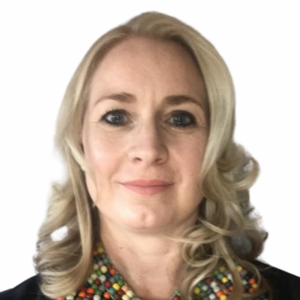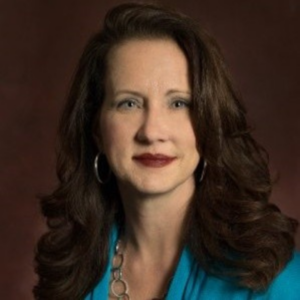Humentum’s Theory of Change states that locally led development can only happen when an organization starts to exercise autonomy over its operating models. The way to gain autonomy is to infuse your operations with equity, resilience, and accountability or “ERA.”
Sareta Thomas, a senior financial professional with 20+ years of NGO experience and Humentum consultant, recently reviewed several of Humentum’s financial consultancies and online courses from an ERA perspective.
Here she talks about how starting with equity automatically helps you with resilience and accountability.
Q: Can you explain in practical terms what ERA means to you?
ERA is how an organization does its work. Here is how I talk about them:
Equity is about everyone within an organization getting the same treatment, having the same opportunities.
When we talk about resilience, I think about risk management — how well can an organization respond to unexpected shocks or losses of any kind, or changes in their environment.
Accountability is how well we communicate with stakeholders both internally and externally. I also think of it as how we protect the resources we’ve been given as an organization. Good stewardship is part of accountability.
Q: If you’re talking to an organization that has never heard of ERA or locally led development, how do you introduce the concept? Let’s say a small CSO focused on feeding and housing children. Why should they care about ERA versus just trying to get more funding?
If the thinking is: I need more money because I have more children I need to take care of, I might start by talking to them about risk management. You can use the example of COVID. How many organizations closed their doors because they didn’t have reserves? They weren’t prepared for that risk.
As soon as you start to make those linkages — that equity, resilience, and accountability are all about getting full and fair funding and withstanding challenges to keep doing the work they’re doing — CSO leaders become very interested.
Another way I start the conversation is talking to them about relationships. They may not have thought about: Who are my stakeholders? Do I know what matters to them? Having relationships with funders (one type of stakeholder) can build confidence to start negotiating, to have various discussions that can help in the long term. People are so amazed about how many stakeholders they actually have. Those relationships can help them on their journey of resilience and sustainability.
Q: How does equity make a difference in “nuts and bolts” consulting work, like cost recovery?
We see a lot of inequitable practices when we look at what a funder is doing to help an organization be more resilient, more sustainable. We can guide organizations to better identify core costs and have stronger policies around them so they can negotiate with the funders.
We want to make sure, at the end of the day, that all organizations, regardless of where they are based, regardless of their size, have access to the same opportunities. Understanding equity and embedding it in policies and practices (like core costs) is actually fundamental to any kind of financial system or funding.
Q: What does it look like to do consulting equitably?
Even before Humentum developed our Theory of Change, we grounded all our engagements in inclusivity. Meaning, we make sure all levels of the organization are represented in our discussions.
We invite board members, management, program staff, finance staff, to participate because everyone needs to get the learning. I think as soon as you start to work with just one person, or just one department, you’re not going to have the same kind of outcome.
The results at the end of the day are amazing. That’s when one component – equity – translates to the other components of accountability and resilience.
For example, I recently helped some organizations develop a financial management manual. By starting with an inclusive approach, people are so appreciative to be part of the learning. That’s the first benefit.
Second, by including more people you’re showing them that topics like financial sustainability and financial management are for everybody. It’s not just the board and the CEO; everyone has a role to play.
And third, now that I’m doing the impact assessment (three months after the consultancy), we can see that even something like policies and procedures can become embedded in the culture, can become “here’s how we do business” when you operate with inclusivity. Instead of a policy manual developed by consultants who only talked to a few executives, it’s a manual that entire teams were part of creating. They have a stake in being accountable to what they were part of.
By embedding policies into the culture, when you have high turnover (which many smaller CSOs do), you mitigate the lack of knowledge transfer. How? Because the policies aren’t sitting on one person’s computer or in a drawer somewhere. They’re part of how everyone operates. So now you have a more resilient organization that won’t face setbacks every time a person leaves.
That’s just one example of how one aspect really feeds into the others to achieve successful business outcomes. Equity leads to resilience and accountability, and vice versa.
Q: If you’re a CSO or an INGO, and you want to build ERA into your operations and you need some outside help, how can you tell if that person or organization is going to do the work with ERA in mind?
For me, it comes down to experience. You want to work with a consultant that has experience of working in different types of contexts, in different locations. Someone who has worked with different international NGOs, local NGOs, with funders. It’s very difficult to advise on equity if you’re only used to working with one kind of group, for example.
Or resilience: if you’re only familiar with one type of organization, it’s hard to guide them on how to withstand challenges and change from many different outside forces – which is the reality for our sector. As a consultant you need to be able to share life experiences or practical examples with clients. People are much more open to that than you just telling them what to do.
One way to find out about a consultant’s experience is to ask for a case study or examples of their work. Ask not just about the results, but how they achieved them. If they didn’t include multiple stakeholders, for example, then even great results probably won’t last. In the short-term leaders can implement policies, yes. But if a majority of stakeholders weren’t part of the creation process, they won’t follow it.
Connecting the dots: from theory to practice
Q: What’s the most effective way to help people understand ERA?
I find that sharing practical examples of how ERA operating models can make a difference – for example how focusing on equity leads to reaching out to build relationships with funders and partners, and how that in turn leads to resilience. The key is to connect the dots (of the theory) to what’s happening in practice for better for long-term results.
If you need to grow, or you’re navigating complex problems, Humentum’s global team of consultants can help. Reach out to us today [click to schedule a conversation] and we’ll organize a time to learn more about your goals and challenges.


